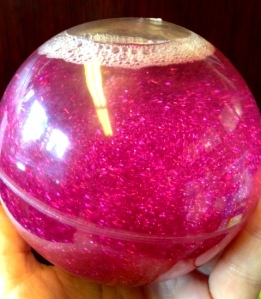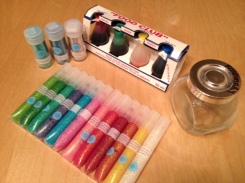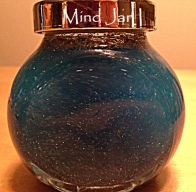 I was recently teaching a MindUp workshop to teachers in my district. A primary teacher asked how to introduce the concept of the brain to young children, or more specifically, the impact of stress, anxiety, and fear on the brain. This is a question I have been asked many times before. From an adult perspective, learning or teaching anything about the brain seems like a complex undertaking. The reality is, we don’t need to be neuroscientists to teach students about the brain or about the impact of stress, anxiety, and fear on brain function. When I teach these concepts to adults, I use the same visuals I would use with a class of middle school students or with a kindergarten class. The key is to provide students of any age with key visuals they can connect to and refer to when needed.
I was recently teaching a MindUp workshop to teachers in my district. A primary teacher asked how to introduce the concept of the brain to young children, or more specifically, the impact of stress, anxiety, and fear on the brain. This is a question I have been asked many times before. From an adult perspective, learning or teaching anything about the brain seems like a complex undertaking. The reality is, we don’t need to be neuroscientists to teach students about the brain or about the impact of stress, anxiety, and fear on brain function. When I teach these concepts to adults, I use the same visuals I would use with a class of middle school students or with a kindergarten class. The key is to provide students of any age with key visuals they can connect to and refer to when needed.
 In addition to using Dan Siegel’s “Hand Model of the Brain,” which I wrote about in an earlier post, the most successful visual I have found to demonstrate the connection between stress and the brain is by using glitter balls. The use of glitter balls came from Susan Kaiser Greenland. I have included her video clip below. When I demonstrate how the parts of the brain function in both a calm and stressed out state, I begin by explaining that all the pieces of glitter represent the roughly 2000 bits of information our Reticular Activating System takes in each second. When the mind is calm and clear, like the unshaken glitter ball, information is able to pass successfully to the other parts of the brain. If we need to store or retrieve memories, we can access our hippocampus with greater ease. If we need to solve complex problems, make connections, or focus and pay attention, information is able to travel to our Prefrontal Cortex where learning takes place.
In addition to using Dan Siegel’s “Hand Model of the Brain,” which I wrote about in an earlier post, the most successful visual I have found to demonstrate the connection between stress and the brain is by using glitter balls. The use of glitter balls came from Susan Kaiser Greenland. I have included her video clip below. When I demonstrate how the parts of the brain function in both a calm and stressed out state, I begin by explaining that all the pieces of glitter represent the roughly 2000 bits of information our Reticular Activating System takes in each second. When the mind is calm and clear, like the unshaken glitter ball, information is able to pass successfully to the other parts of the brain. If we need to store or retrieve memories, we can access our hippocampus with greater ease. If we need to solve complex problems, make connections, or focus and pay attention, information is able to travel to our Prefrontal Cortex where learning takes place.
In contrast, when the mind is anxious or in a state of stress, the mind becomes just like the shaken glitter ball. Information is sent to our amygdala, our flight, fight, freeze center, as opposed to where it is needed to go. Like the glitter ball, the mind becomes cloudy and unfocused, information swirls around, and it is much harder for information to get where it needs to go. Can’t we all think of a time when our mind felt like the shaken glitter ball? I imagine it was hard to focus, hard to remember things, and hard to keep information straight.
When I teach students about deep breathing, we look at the glitter ball again. This time, using our breathing, we shake the glitter ball and breathe while the glitter slowly settles to the bottom. This represents the calming effect of breathing on the brain. Students as young as kindergarten can relate to the visual of the glitter ball, and I have seen the image of the glitter ball reappear in conversations and in writing. I remember one of my former kindergarten students, during a particularly tough moment, tell me his brain felt like the glitter ball. His thoughts were swirling around and he recognized he was having a hard time controlling it.

If you can’t find glitter balls, making your own is simple enough. Before I came across Kaiser Greenland’s video, I used the jar of thick oil and small beads pict ured at the start of this post. You can also create a more glittery visual by using hot water, food colouring, glitter glue, glitter, and a glass jar. In a small jar, mix a couple of tablespoons of glitter glue with hot water (if water is cold, the glue won’t break down). Stir until the glue is dissolved. Add a drop of food colouring and some dry glitter and shake. For a great book that goes with this concept,
ured at the start of this post. You can also create a more glittery visual by using hot water, food colouring, glitter glue, glitter, and a glass jar. In a small jar, mix a couple of tablespoons of glitter glue with hot water (if water is cold, the glue won’t break down). Stir until the glue is dissolved. Add a drop of food colouring and some dry glitter and shake. For a great book that goes with this concept,  try “Moody Cow Meditates.” Since the deep breathing practice (Brain Break) used in MindUP is not considered meditation, I change the book to “Moody Cow is Mindful.” In this great children’s book, Moody Cow is shown how the glitter jar represents his “moody” brain in the same way we teach the glitter jar to students. By the way, for those techies out there, Moody Cow also has his own IPad app.
try “Moody Cow Meditates.” Since the deep breathing practice (Brain Break) used in MindUP is not considered meditation, I change the book to “Moody Cow is Mindful.” In this great children’s book, Moody Cow is shown how the glitter jar represents his “moody” brain in the same way we teach the glitter jar to students. By the way, for those techies out there, Moody Cow also has his own IPad app.
 Once you have used the visual of the glitter ball, I have done a number of extension activities with students. Some of these activities include:
Once you have used the visual of the glitter ball, I have done a number of extension activities with students. Some of these activities include:
- Journaling about a time their own brain felt like the shaken glitter jar. What was going on? What did it feel like? How did they calm their mind?
- Having students cover a paper circle entirely with glitter glue and then write about things that cause them stress, anxiety, or fear. The paper glitter ball can also serve as the center starting point for a web.
- Placing just a small bit of glitter glue at the bottom of a paper circle to represent a calm mind. Have students write about things that calm their mind or complete a similar web to the one outlined above.
- Brainstorming a class list of strategies that can calm the mind and then writing them on paper glitter balls that can be posted in the classroom for future reference. This is also a great activity once students are farther into the program and have more information to draw on.
- Having students bring a small jar from home. Students can then create their own glitter jar that can be taken home, explained to parents, and left at home for future reference.
In short, you don’t need to be a neuroscientist to demonstrate the impact of stress on brain function. No matter how old or young your students, the glitter ball teaches the basics of what students need to know. I also promise you that whether you teach adults, middle schoolers, or kindergarteners, the enthusiastic response is the same. For those students that want to learn more, which some do, you also don’t need to have all the answers. Sometimes questions are the best segue into demonstrating that teachers are learners too. While I feel I have a good understanding of the brain science behind MindUp or mindfulness education, a recent visit to a couple of middle school classrooms in my school left me with questions I couldn’t answer with “complete” confidence. One student insightfully asked whether a photographic memory was an indicator of an overdeveloped hippocampus. Another told me that the reason our flight, fight, freeze mechanism doesn’t always pick the best option is that it is so primitive it does not have the capacity to factor in modern dangers. You don’t need all the answers and, when in doubt, Google!

Thanks for the tips! I will use this at home with my boys!
I am going to be using this as part of my emotional health unit with my fifth grade students!
Glad to hear it was useful. 🙂
I love using all this wonderful material to groups of kids to help them understand how the brain works and how to use their brain power. I love teaching this material to little kids. I think it is so important to help little kids learn how to develop their own self esteem and empowerment. Gramma Shirah http://www.grammashirahsays.com
A wonderful way to raise awareness among our children about how stress may hinder their thinking process and finding practical methods to ease their tension in school.
Does anyone know where I can purchase the glitter balls? Somewhere online preferably. I work on a mental health ward in a hospital and don’t think a glass bottle will be allowed. That said, I think they could be very useful in mindfulness and emotional regulation interventions.Thank you!
You can buy them at some speciality toy stores. You can also order them online, although I have only found the small ones online. The other option is to use a clear plastic container as opposed to the glass if you want to make your own. I have also found small tornado simulators (in a clear plastic tube full of glitter) in the science section of specialty toy stores that also works. Hope that helps.
🙂 Pam
Pingback: 5 Social Emotional Learning Activities for Elementary Students
Pingback: 5 Social Emotional Studying Actions for Elementary College students - Mibuenempleo